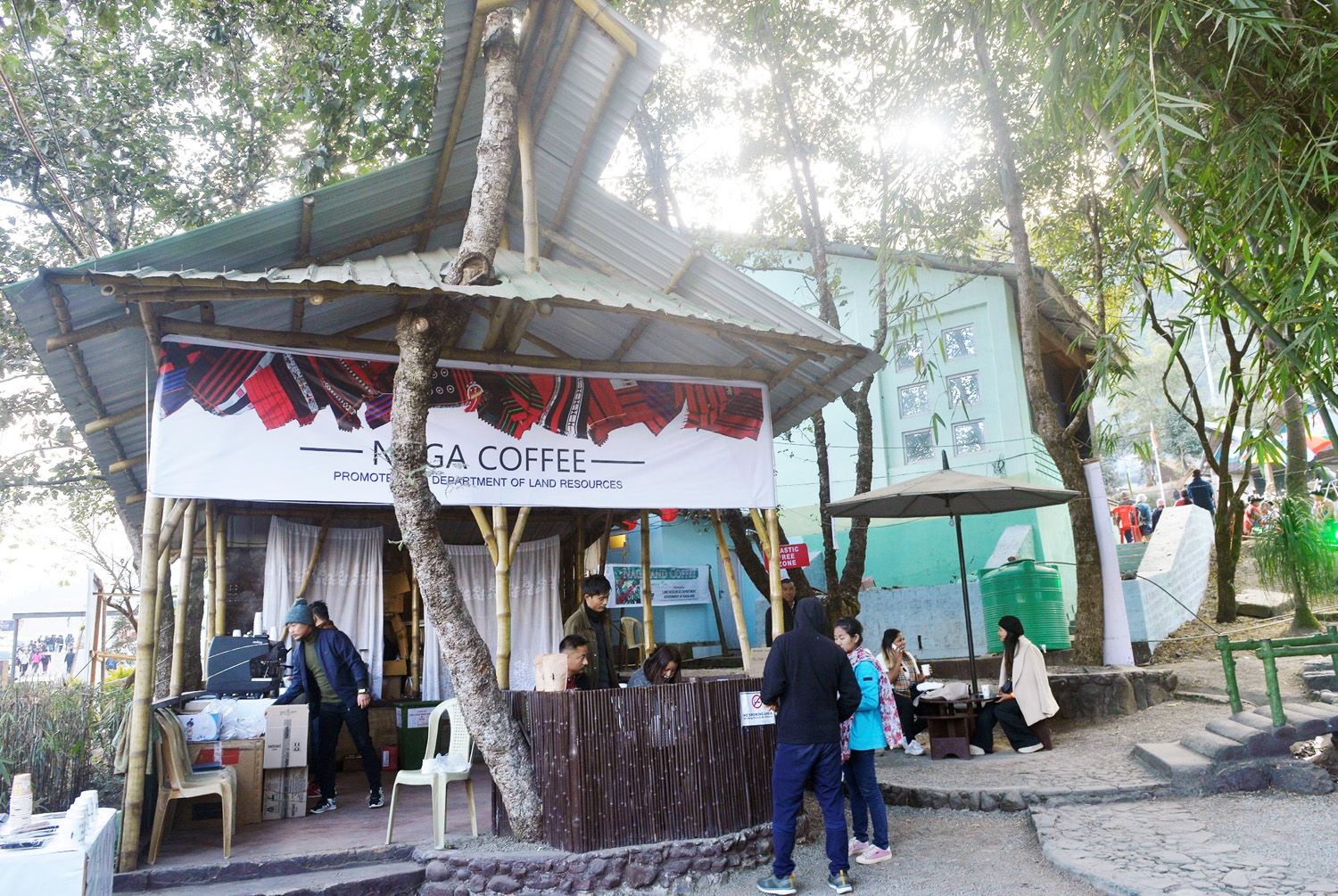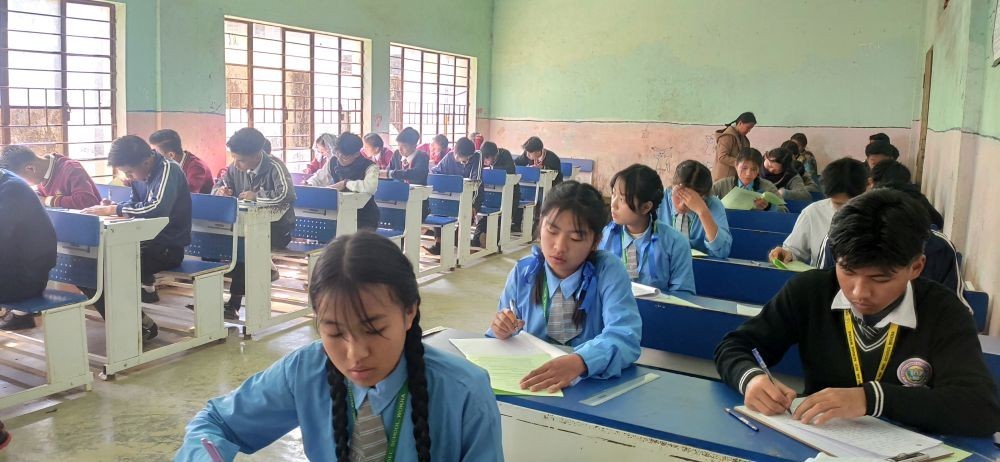Coffee Plantation: An alternative way to self employment

Land Resources Department promoting ‘Naga Coffee’ at Kisama. (DIPR Photo)
Kisama, December 9 (MExN): With an objective to promote Nagaland coffee and encourage educated unemployed youths to take up coffee plantation as an alternative to employment, the Department of Land Resources has been promoting ‘Naga Coffee’ at Kisama since 2015 by opening a stall, where different varieties of Nagaland coffee are being served every day.
In Nagaland, according to a IPR report, coffee was first grown in 1980s. However, coffee plantation in Nagaland was failed due to lack of management and non-availability of market. It was only in 2015, the Department of Land Resources revived coffee plantation, and since then its plantation is deeply rooted in our cultivation, besides gaining importance and popularity on a large scale. The Department also works in close association with Coffee Board of India for coffee related programme. Presently, the state is exporting Nagaland coffee to South Africa, and a MoU on 'Marketing' was signed in 2016 with the Government of Nagaland. Last year, 17 MT of Nagaland coffee was exported to South Africa.
Kohima is the district having the highest number of plantation with 34 lakh saplings covering 89 villages.
Coffee is considered as the longest surviving cash crop because of its high demand in international market. Coffee is the second most important beverage crop of India next only to tea. Although, India contributes only a small percent of the world's production (2.5%) yet India coffee has created a niche for itself in the international market, particularly Indian Robusta for their good blending quality. Coffee Arabica and Coffee Robusta are the two main varieties grown in India accounting for 49% and 51% of area respectively under its plantation.
Coffee is a high value plantation crop of global economic significance having great potential in foreign exchange value for the state in particular and the country in general. Nagaland has immense scope and potential for coffee plantation owing to the favourable agro-climatic conditions. Both Arabica and Robusta coffee are found to be viable in the hilly and low-lying areas of the state.
Arabica is suitable at the higher elevations above 800m MSL and Robusta at the lower elevations ranging from 300m to 800m MSL. It has been estimated that a total area of 10,40,100 hectares (Robusta 3,55,300 and Arabica 6,84,800) is suitable for Coffee plantation in Nagaland.
Presently, 6180 ha have already been covered under coffee plantation in the entire state, which is 0.59% from the overall coffee suitable area of the state.


.jpg)
.jpg)
.jpg)
